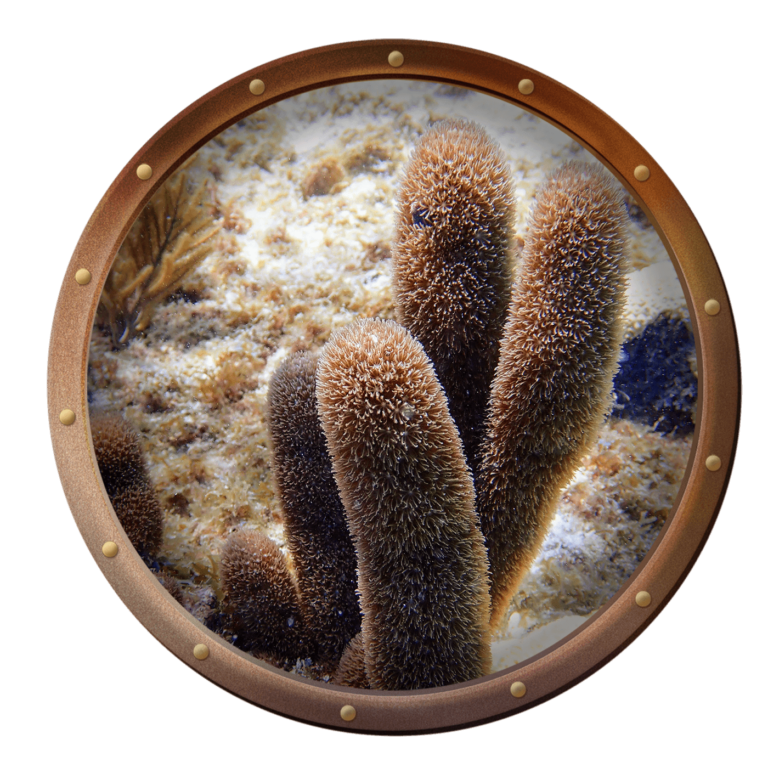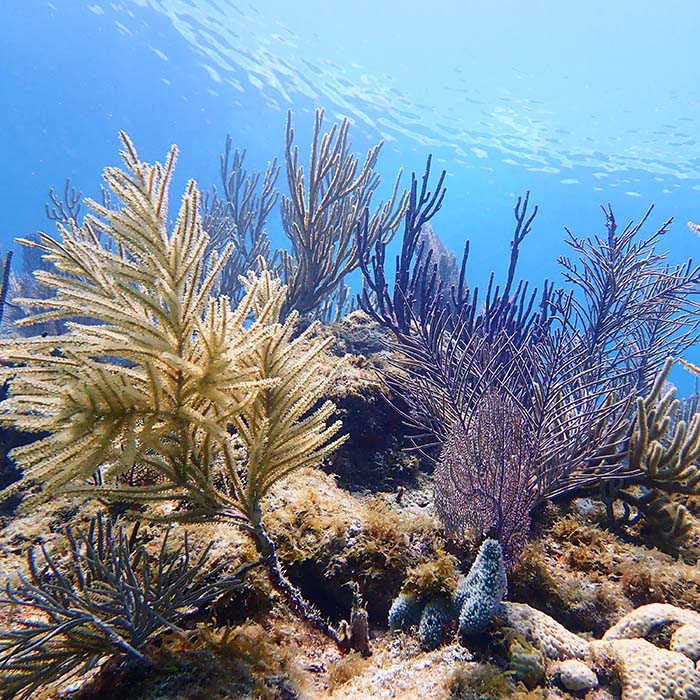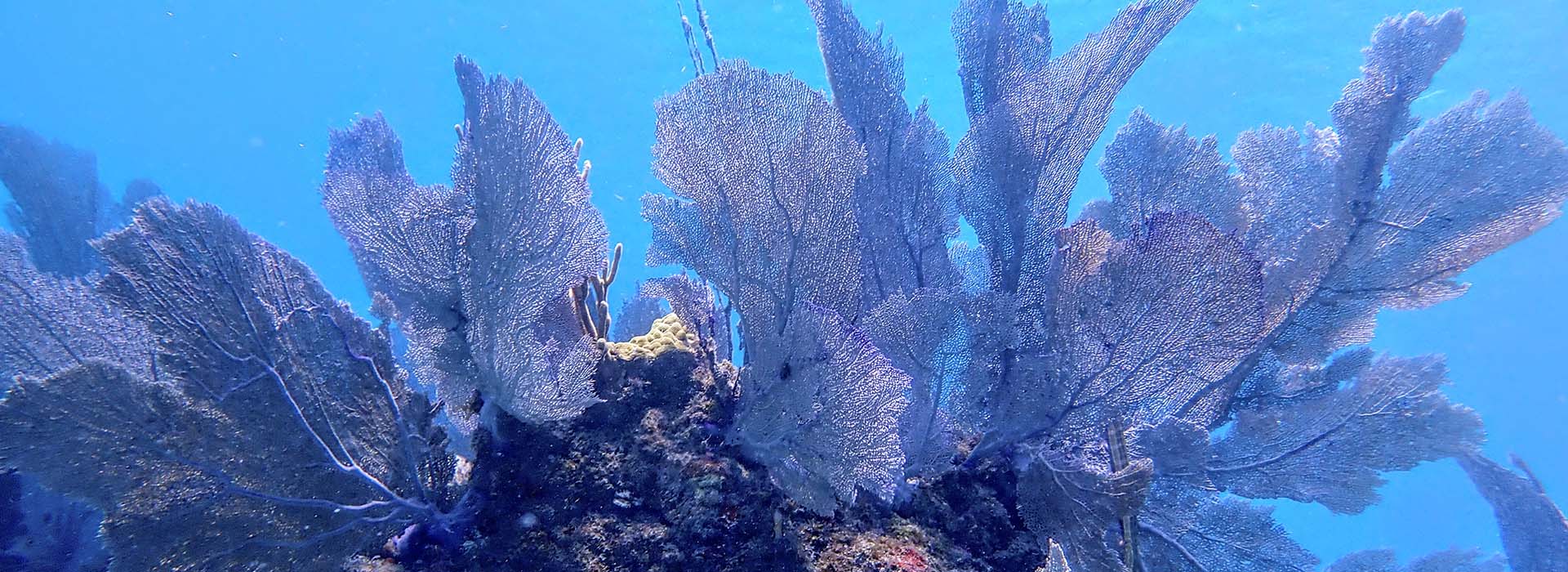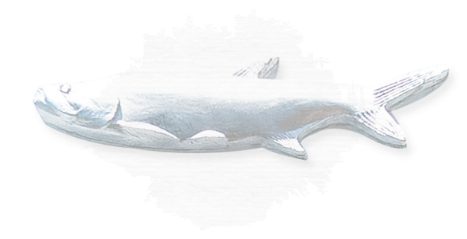Corals are a very diverse group of animals occurring in deep cold ocean waters to shallow warm seas. They are all members of the subphylum Anthozoa and divided into the classes Hexacorallia, the “hard corals” that generally have sixfold symmetry, and Octocorallia, the “soft corals” with eightfold symmetry. The hard corals are the primary reef builders, producing a stoney skeleton made of calcium carbonate. A thin layer of living tissue covers this. The soft corals may be encrusting and have no skeletal structure, create rigidity with specialized proteins forming a rigid internal core or contain many small spicules of calcite that provide support.
Gorgonian corals are a group of octocorals belonging to the suborders Holaxonia, Scleraxonia and Stolonifera of the order Alcyonacea, formerly grouped in the now-unaccepted order Gorgonacea. They have structures composed of the protein gorgonin and spicules made of calcite that give the corals support and flexibility. Colonies grow in various forms, sometimes with different growth patterns occurring within a species depending on environmental conditions. They attach to the substrate with a holdfast and may be unbranching (growing straight up from the base), lateral branching (side branches extending off of another main branch), dichotomous branching (random Y-shared branches), pinnate branching (feathery branches) or interconnected branching (netlike interlaced connected branches). Common names include sea whips, sea plumes, sea fans, sea rods and sea fingers.

Gorgonians may be symbiotic, containing photosynthesizing zooxanthellae that require sunlight, or aposymbiotic, relying only on feeding for nutrition. The symbiotic gorgonians tend to have brownish-colored polyps due to the zooxanthellae in their tissues, while the aposymbiotic gorgonians may have white or brightly colored polyps. Gorgonians are filter feeders, their eight-tentacled polyps catch particulate matter from the water column. Nutrients are circulated through ciliated channels called solenia, or stem canals. Many species of gorgonians thrive in deep cold water or areas with high levels of particulates that are not favorable for hard corals.

Many of the reefs in the Florida Keys are now dominated by soft corals. The stony corals that built the foundation of the Florida Reef Tract have suffered greatly over the past 50 years from pollution, increased temperatures, ocean acidification and disease. As the living tissue of the hard corals died, it left space open for more soft corals to attach and grow. While the soft corals provide food and habitat for many species of fish and invertebrates, they do not contribute to building or maintaining the solid reef structure. Over time, erosion from waves and damage from storms wear down the reef and lead to major ecosystem changes. This illustrates the importance of balance within an ecosystem.
There are many different species of gorgonian corals in the Florida Keys. You can see every type of gorgonian colony formation if you visit the reef.

Sea Plumes
Sea plumes, members of the Antillogorgia genus, may have short featherlike branches or long trailing branches giving them the appearance of a weeping willow tree.

Corky Sea Finger
Members of the Briareaum genus may be encrusting or branching. The corky sea finger Briareum asbestinum, is also called “deadman’s fingers” due to its individual stalks projecting upwards like a hand coming out of the ground.



